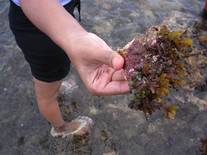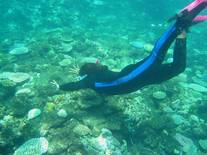The impact of live rock harvesting on fish abundance, substrate composition, and reef topography along the Coral coast, Fiji
The lucrative live rock trade, of which Fiji is the major exporter, has raised concerns on sustainability and ecological impacts. This study is the first to quantify the ecological impacts of live rock removal. The abundance of seven fish families (Chaetodontidae, Blennidae, Gobidae, Pomacanthidae, Pinuipedidae, Pomacentridae and Synodontidae), reef substrate composition and topography were compared between four harvested and four non-harvested reefs along the Coral Coast, Fiji. Belt transect method was used for fish counts, point intercept method for substrate composition and a graduated rod was used to take depths for profiling.
The abundance of Chaetodontidae, Blennidae, Pomacanthidae and Synodontidae was significantly higher in the non harvested reefs while Pinuipedidae were significantly more abundant in the harvested reefs. There were significantly more coralline algae and live coral in the non-harvested reefs and higher algae in the harvested reefs. The harvested reefs were on average significantly deeper compared to the non-harvested reefs. The observed differences in fish abundance, substrate composition and depth between harvested and non harvested reefs are indications of the adverse impact of live rock removal on reef flats. This study provides scientific evidence of the impact of live rock trade on reef ecology which will help government with decisions on the future of the trade in Fiji. We recommend short term measures including sustainable collection method guidelines along with long term goals to gradually phase out harvesting within five years by introducing cultured rocks as an alternative source of income.




